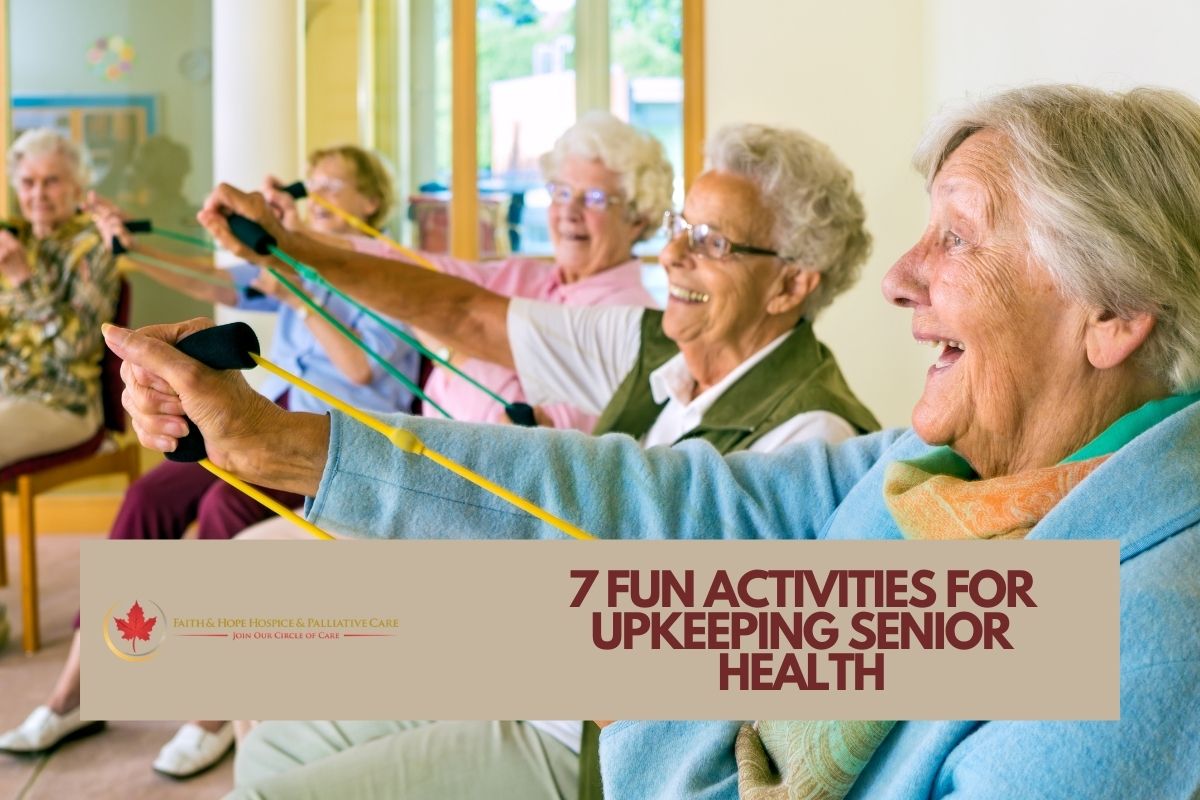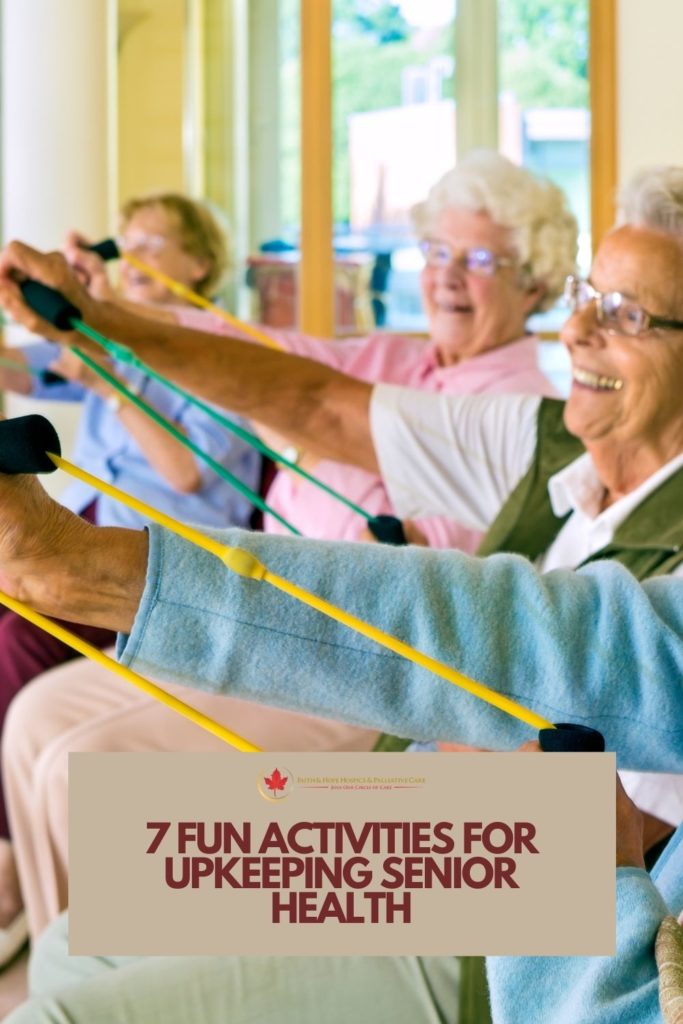
- By: administrator
- Blog
- No Comments
Being active is very important for our overall health. Daily exercise is important, as it provides various benefits for both the body and mind. However, some people are inclined to think that an active lifestyle can be risky for seniors. While it’s true that older individuals often have limited mobility and joint pain, there are plenty of light exercises, and activities seniors can engage in to reap all the benefits of working out. Interested in learning more? According to the hospice professionals in Burbank, Ca, here’s a list of the seven best activities for senior citizens that’ll encourage a healthier lifestyle and support their well-being.

Activities for physical health
It’s well known that exercise is important for physical health. For example, it can improve sleep quality, reduce the risk of certain diseases and ailments, strengthen the immune system, manage weight, boost energy levels, enhance overall health, and so much more. For seniors, these benefits are invaluable, which is why it’s important for them to be active everyday! Finding the right form of exercise can be tricky, but luckily there are plenty of limited mobility-friendly options for seniors so they can take care of their bodies and reap the wonderful benefits of an active lifestyle. Here are a few examples of exercises seniors can try out for themselves:
Seated exercise
Seated exercises are a very gentle activity, making them perfect for seniors with limited mobility. What’s also great about these types of exercises is that they’re versatile! Depending on the senior’s fitness level, they can do seated exercises with dumbbells, resistance bands, or without any additional weights. There are also plenty of moves to pick from, like bicep curls, modified push-ups, leg raises, side stretches, and more, so seniors can stay entertained and avoid repeating the same boring moves over and over again.
Tai chi
Tai Chi is a world-famous practice, and for a good reason! Loved by many for its relaxing nature, Tai Chi involves making calculated and graceful motions with the arms. For seniors, this activity is great because it’s said to improve balance, strengthen concentration, and increase flexibility and leg strength. If you’re interested in learning more about Tai Chi, there are plenty of beginner-friendly classes that would make a great introduction for seniors.
Water exercise
Seniors with joint pain may really enjoy exercising in the pool. The buoyancy of the water provides pressure relief for painful joints, allowing them to have a more comfortable workout.
Of course, swimming, in general, is a wonderful workout; however, there are other options for seniors who aren’t big swimmers, like water marching, arm circles, and calf raises. The water also acts as a gentle resistance to help increase muscle strength and improve heart and lung function. Overall, water exercises are very beneficial for any senior looking to get fit!
Going for walks
Going for a daily walk outside is both a simple yet effective form of exercise. Besides all the physical health benefits seniors can get from walking, spending some time outside provides its own unique set of advantages that can boost their health in other ways as well. That’s to say when we go outside, our bodies produce Vitamin D as a response to sun exposure. Vitamin D is essential for our health, as it assists with supporting the health of several important organs, like the lungs, heart, and brain, as well as the function of the immune and nervous systems. On top of this, sunlight is linked to increased levels of serotonin, the hormone responsible for making us feel happy!
Any one of these activities would do a wonderful exercise for seniors; however, always remember to prioritize your health! Go slowly and discuss any concerns you may have with a doctor to avoid injury.
Activities for mental health
When discussing fitness, activities that support mental health often go overlooked. However, mental health is important! This is especially true for seniors, as old age is unfortunately linked to an increased risk for declining brain health. Luckily, there are several activities available that help keep the mind sharp! Here are some of the best according to a hospice in Burbank, Ca:
Games and puzzles
It doesn’t get any more fun than playing a game! From chess, solitaire, jigsaw puzzles, sudoku, board games, crosswords, and more, games of all types are a great opportunity to flex your brainpower and practice analytical thinking skills. Not only that, but group games are also wonderful for socializing, which can do wonders for brain health by promoting feelings of happiness and security.
Reading
Reading is a wonderful hobby, no matter what age you are! It’s a great way to engage your mind and reduce stress, strengthen memory, and enhance concentration skills. Many seniors can immerse themselves into a new world and enjoy a well-told story through audiobooks, e-books, magazines, podcasts, newspapers, and of course, the traditional physical book. They can even join a book club to socialize more during the day!
Pick up whatever hobby interests you!
At the end of the day, almost any hobby that calls to you is a great way to exercise your mind. Doing something that you specifically love can help increase your willingness to engage with it, leading to a deeper connection with the task and generally higher levels of happiness. Certain hobbies also come with specific important benefits. For example, playing an instrument can improve finger dexterity and motor skills, artistic crafts like painting can boost cognitive function, and cooking can be a relaxing practice that encourages self-confidence and a better understanding of nutrition.
Conclusion
As you can see, there are plenty of options when it comes to being active! From physically working out to spending a quiet afternoon reading, there is no shortage when it comes to activities for seniors. So, the next time a senior in your life is looking to prioritize their health, use this list from a Burbank, Ca hospice to find an exciting new activity to try!
